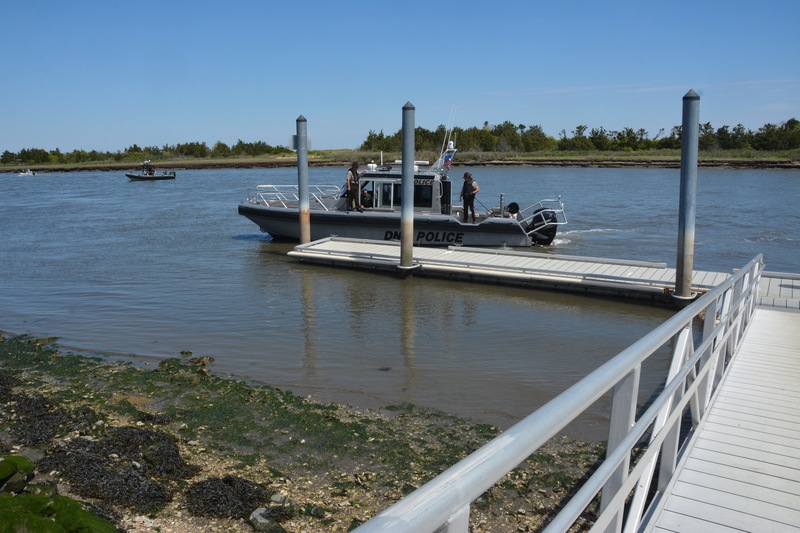A project aimed at lessening environmental impacts, including erosion at the Lewes Public Boat Ramp, and which partners DNREC’s Divisions of Fish & Wildlife and Watershed Stewardship with the Center for the Inland Bays is making improvements to the Lewes-Rehoboth Canal shoreline, the boat ramp parking lot and the neighboring DNREC Shoreline & Waterway Management facility on Pilottown Road.
The first phase of the ongoing project began last summer when turf grass that required weekly mowing was replaced with native grass and shrubs in vegetated storm water ditches and basins at the boat ramp.
“These grasses take a few years to establish and right now, in their second year, they may look unruly,” said Rob Gano, Division of Fish & Wildlife regional manager. “Until they become established, we encourage the public to please be patient and excuse the unkempt look, and to step carefully to avoid trampling the native grass plugs.”
Division of Fish & Wildlife construction crews installed two environmentally-friendly crosswalks across the grassed areas to reduce erosion from foot traffic. Boaters can now use these walkways to access their vehicles when launching and retrieving their vessels.
In addition, the site’s shoreline was improved with native marsh grasses and oyster castles that can be seen from the Lewes-Rehoboth Canal at low tide between openings in the shoreline’s rock sill. Creating these living shorelines by employing natural materials to stabilize shorelines from erosion, helps maintain and restore coastal areas in a more natural way, Gano said, while the living shorelines also provide habitat for coastal species.
“The oyster castles comprise concrete blocks that are assembled like Lego building blocks and resemble sand castles,” said Sara Esposito, environmental engineer with DNREC’s Division of Watershed Stewardship. “Their purpose is to provide habitat for new oysters to colonize, and they also help protect the shoreline from wave energy.”
The oyster castles at the Lewes ramp are a joint design of the Division of Watershed Stewardship and the Center for the Inland Bays (CIB), which helped build them. One section was seeded with oyster larvae and the other was installed without, with the premise that the CIB will monitor both structures to see if oysters naturally colonize the plain blocks, or if the seeded section is more successful.
DNREC’s Nonpoint Source program and the CIB provided funding for project materials including plants, pavers and oyster castle blocks, while the divisions of Fish & Wildlife and Watershed Stewardship and CIB staff provided labor. Passwaters Landscaping of Bridgeville planted the native grasses and shrubs in the drainage ditches and basins and also the planting in front of the Shoreline & Waterway Management building.





















































